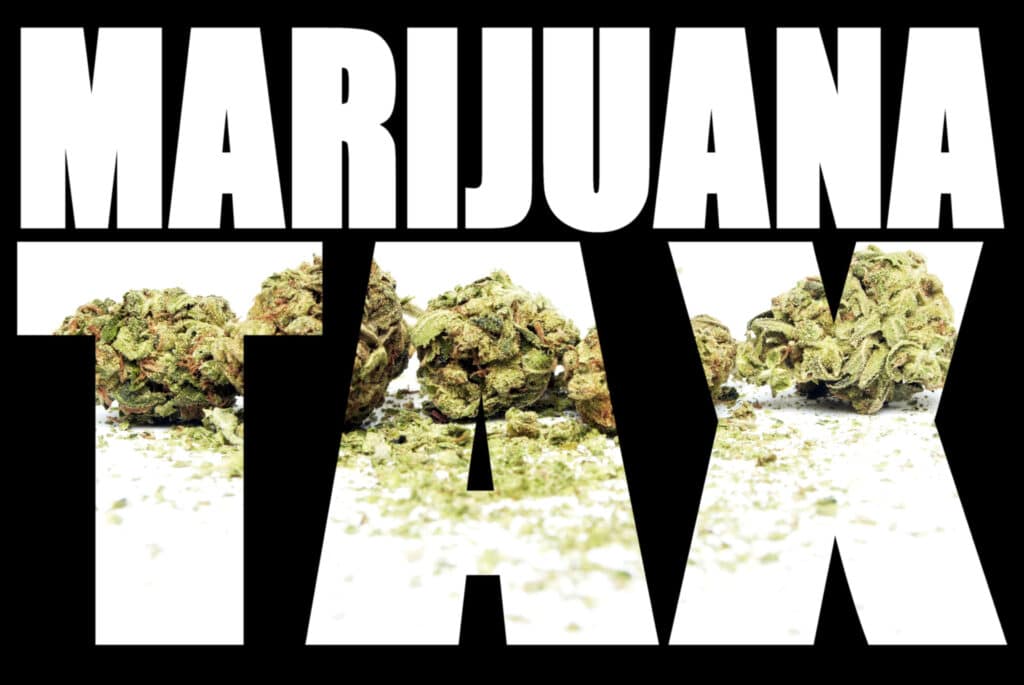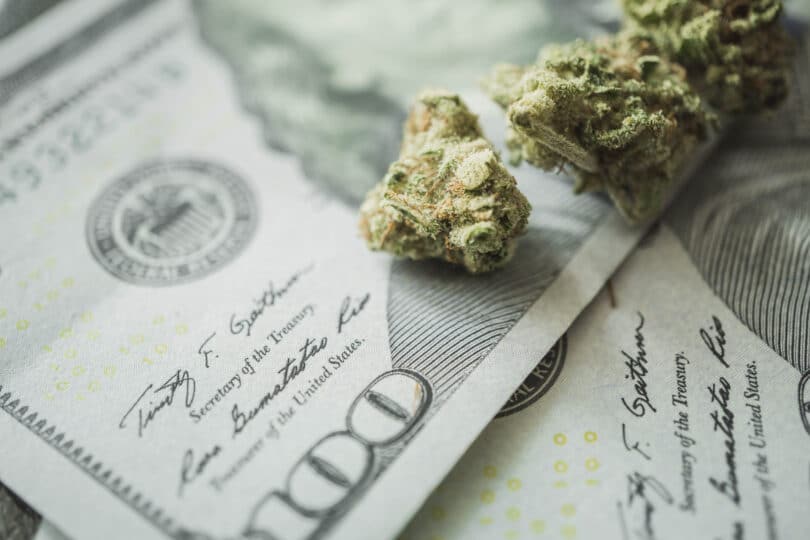We’ve had legal recreational weed in the US to some degree since 2012; but the industry is quite unstable, with many going broke. So, where is all the money in the weed industry?
Is the weed industry working?
There are dispensaries pretty much everywhere in legal states. And a ridiculous amount of new products constantly coming out, which introduce new ways of using weed. None of us were using oil vapes a few years ago, for example, but its hard to bypass them now. This is the same for other products like shatter, or gummies, or pills. They didn’t exist, or only did in tiny amounts before dispensaries came around. Now they’re commonplace.
Plus, we know everyone is using weed. How do we know that? Because weed as an industry didn’t just pop up. It’s been around as a black market since the drug was first made illegal back in the early-mid 1900’s. It’s been the most popular illicit drug for decades. There was never a chance that legalizing it would diminish use, either. It hasn’t shown to increase it, but whatever status quo for use there was, still exists. Now we just have more ways to get it in us, and a variety of products we never dreamed of.
And we know that there’s tax money coming in. It’s hard to know when reading a headline, however, if the amount is a high amount per expectation, or low amount. Those ideas are not based off the actual amount, but in what the initial prediction for sales would be. So though the titles exist, the articles rarely give an indication as to whether the amount spoken of, is considered good by regulators. If its not, they don’t tend to want to say it.

Yes, the weed industry is working. But then, it also was before any recreational legalization took place. Perhaps ‘working’ is not the way to look at it. Perhaps its more about if its working as well as predicted? And, of course, this question only refers to legal markets. If you’re paying attention, you already know many companies are having problems – from dispensary owners, to cultivators, to product producers.
So if its working, and the product is available, and we’re all using it, why are there problems? And where does all the money go? Aren’t we all collectively smoking enough that weed should be a massively big industry, bringing in ungodly amounts of money? Well, it is… The real question is: ‘where is the money in the weed industry’? Far as I can tell, two places. And really in the end, it comes down to the second.
Corporate weed
A general reality of legal business is that those who cannot afford to be in operation, won’t be. While this goes for all businesses, legal or not; in legal industries it means a company having to comply with regulation measures. In the case of weed, this has been a constant issue, and caused many small business owners (and larger ones) to go under.
In terms of legal cannabis markets, the only operations to fundamentally do well, are the corporate ones. Big corporate companies like Trulieve, Curaleaf, and Tilray; which can pay the necessary fees, and which can even influence government practices and legalization efforts. Trulieve is behind Florida’s efforts to put recreational cannabis on 2024’s ballot. Trulieve knows it needs the sales, and this is a good way to get them.
Think of Walmart vs a mom-and-pop brand. Nearly all the time, Walmart wins out; even to the point of reducing an industry to just corporate players. And considering most states have regulatory measures that ensure a certain number of licenses (sometimes a majority) go to social equity applicants, (who are disadvantaged people from locations most affected negatively by drug wars); much of the competition for these big firms, are people with no money to begin with. In fact, such requirements have repeatedly been stifling industries, leaving only big players.
It often takes money to earn money, and the cannabis industry is a great example of how that happens. Essentially, only those that went into it with money in the first place, are reaping any rewards. Although even they often have problems. And this can be seen in company closures/sales, downsizing, and restructuring activities; which many big companies have had to do since getting involved in the industry.

While a few smaller brands like Cookies have been able to make it, there are very few stories like this. It’s very much a one-of-a-kind situation. Perhaps its not shocking that Cookies is often targeted, and no less for things like corruption; even as large companies seem to avoid such issues. This isn’t to say Cookies never did anything corrupt – I can’t speak to that. But whatever a smaller company like that did, will almost never compare to the corruption of bigger companies. Think Curaleaf and tainted products.
Cookies recently closed an LA store because of issues with a landlord, and it’s hard to know if anything more was behind this than standard landlord complaints. If anything, it seems the company takes a lot of flack; and my guess is that its because it’s a small player that got big enough to be competitive with big companies.
The black market weed industry
Corporations beat out the little guy, but they’re not the real answer. The most relevant answer to all of this, is that the black market is the biggest money-maker in the weed industry. In fact, when you look at any data about number of dispensaries, it becomes quite clear that the legal market can barely compete with the black market, anywhere in the US. And this doesn’t even account for cannabinoid products sold online, or in other non-dispensary locations.
A great example of this is California, which according to Forbes in early 2023, had all of 1,000 legalmdispensaries for a state of 40 million people. Yet, there are dispensaries all over the place. New York has the same issue. It’s a huge city, with all of 60 licenses for legal dispensaries given out as of September 2023; which was the same amount given out when first reported in the spring of last year. These are only licenses, and don’t mean there are 60 dispensaries yet. However, it was estimated the city has about 1,400+ illegal dispensaries. So less than 60 vs 1,400 plus.
Automatically this indicates a huge divide in terms of earnings between legal and illegal markets. If an illegal market has 23X the stores of a legal market, it can be generally assumed that the illegal market brings in 23X more. That’s just basic math; although it doesn’t account for size of stores or number of sales. Still says a lot, though. There might be tons of headlines about cannabis taxes rolling in, but logically, those taxes come from only a small percentage of sales. In no state do legal dispensary numbers come close to the number of illegal ones.
Perhaps this could’ve been different if every place to legalize, didn’t feel the need to adopt insane tax policies, and institute expensive and unnecessary regulation measures. But they did, and they still continue to despite these issues having such an obvious effect. I mean, really, we’re years in. And yet every new state to legalize, does the exact same thing by applying high taxes; along with laws that make opening dispensaries difficult.

So, where’s the money in the weed industry? It’s where it has been since cannabis was first made illegal: with the black market. And the only other companies to do well, are big corporate enterprises that can compete…and let’s be honest, they have so many problems that their futures aren’t much more stable than the little guys who keep going under.
The black market doesn’t have to worry about expensive regulatory and tax measures. While this can lead to some problems, like rising THC levels in products; it also means products are priced lower; and the prices can quickly change to stay competitive. There is no lack of dispensaries, or inability to get them up; and while this market keeps exploding out, states like New York and California, can’t manage to get dispensaries open. Beyond this, the entirety of the cannabinoids market (sold in dispensaries and beyond), is solely illicit – and its huge! No wonder the black market is where all the money is.
Conclusion
When recreational weed markets first opened, it was spoken about like it would be a gold rush. In reality, its mainly still a black market, with a small amount diverted to legal sales. And should legal systems keep instituting insane regulation policies; the legal segment is likely to get smaller and smaller in comparison to its black market counterpart.
Hello weed fans! We welcome you to Cannadelics.com, where we report on the most interesting cannabis and wellness stories of today. Keep us company by coming by frequently for updates; and head over to the Cannadelics Weekly Newsletter, for news and product promos, all in the same place.









